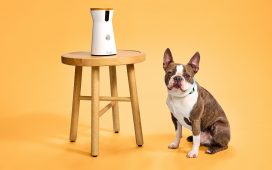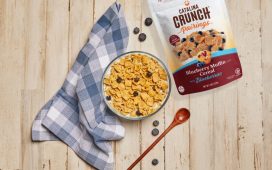Kombucha is an effervescent fermented tea, sweet and sour, probiotic and fizzy. It is an acquired taste. The first time I tried it, I thought it might have been made with rotten fruit and a tincture of sweepings from the floor of a health food store. Someone asked me what I thought, and I turned into a wine writer: It was vinegary on the nose; there were afternotes of pond water, acid, fire. I took another taste. That one was better — tart and refreshing. I put the bottle in the refrigerator and took sips from it over the course of a few days, particularly in the morning, when it delivered a jolt that I thought was superior to coffee. It gave me a feeling akin to taking a shower outside, or drinking a Coke poured over pebble ice. Before long I was buying $10 or $15 large bottles of the stuff, shot through with apple, with grape, with pomegranate, cherry, turmeric, ginger, cayenne. This was the start of my journey into the kombucha lifestyle.
I am not immune to hippie-cat provisions. I was a child during the days of wild sideburns and patchwork maxiskirts. I grew up in a house where there was always homemade yogurt in a rough clay pot in the refrigerator and often a sort of root beer brewing in old Gallo bottles in the basement. My parents bought their vegetables from an unmarked storefront we called Norman the Hippie’s, with an aging Peugeot station wagon in front filled with the boxes Norman trucked in from farms upstate. They ate in candlelight, with the New Lost City Ramblers on the turntable. For a time they grew their own sprouts. Once when I was in middle school they let me hitchhike a few hundred miles to attend a memorial service for my school’s theater teacher, where we flew giant bird puppets through a field and everyone older than I smoked hand-rolled cigarettes and I ate brown rice and vegetable stew in a barn scented with wood smoke and thought it the greatest meal I’d ever had. I was bound for kombucha — the home-brewed kind — from the start. I recognized that as soon as I found I liked the taste.
To make kombucha, you need a symbiotic culture of bacteria and yeast that you add to sweetened tea, to encourage fermentation. That culture is called by its acronym: Scoby. Some call it a tea fungus, or a mushroom. Really it’s a slimy, rubbery cellulose mat, like a silicone implant that smells of vinegar. Others call the Scoby “mother,” because it, like a sourdough starter, grows as it feeds, so each time someone uses one to make a batch of kombucha, the process yields a second, baby Scoby that can be used to make yet more kombucha, thrown out or given away. In hippie communities, it’s easy to score a Scoby baby. Of course you can order one online ($3.99 on Etsy).
My kombucha mother came from a farm on the eastern end of the island of Maui, in Hawaii, where someone I know found it living in what’s called a Scoby hotel — a glass jar filled with a number of Scobys, covered with kombucha and stored in a fridge — and brought it back to life. It traveled east a year or so later, then lived and worked and gave birth all over the Western states, leaving Scoby babies in Seattle, Portland and San Francisco, on the playa at Burning Man, in weed-farming towns and festival towns, wherever you can trade good things for rides or a place to sleep on patchouli-scented couches. Eventually it made it to Brooklyn, where I set out to brew.
My initial batches were simple: water, supermarket sachets of black tea, white sugar, the Scoby and some already-brewed kombucha. I let that sit in a big glass jar on the countertop for a couple of weeks with a clean cloth hat that allowed it to breathe, in what’s called a first fermentation, then funneled it into clamp-top glass bottles with a little apple juice and a few sticks of ginger, for a second fermentation of four or five days to build up its fizz. Then, a few brews in, maintaining fanatical cleanliness as I worked, to keep the kombucha from fouling, to keep everyone healthy and safe, I started experimenting with other teas, other flavorings, leading to a house style that now includes a bag of Red Zinger tea as a nod to the 1970s. Mothers have children, and life just keeps rolling along.
Recipe: Kombucha





